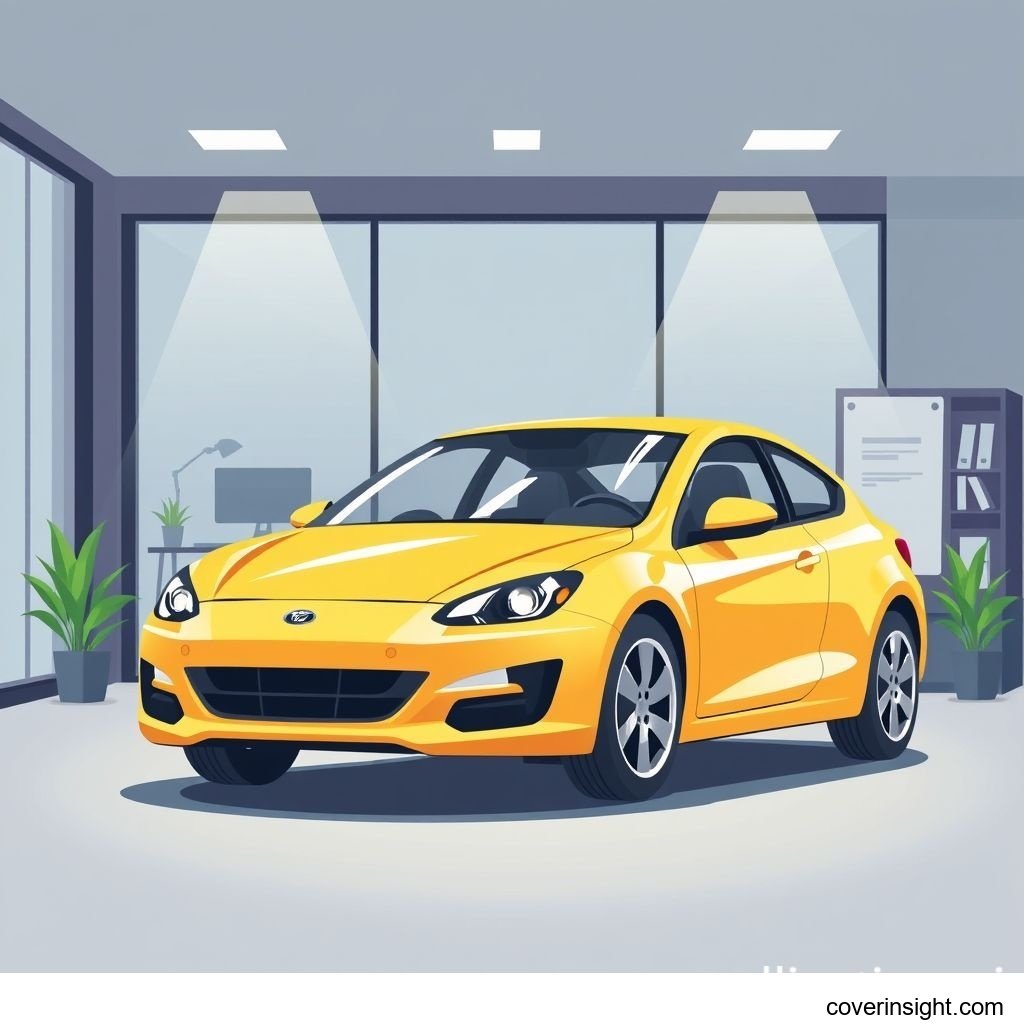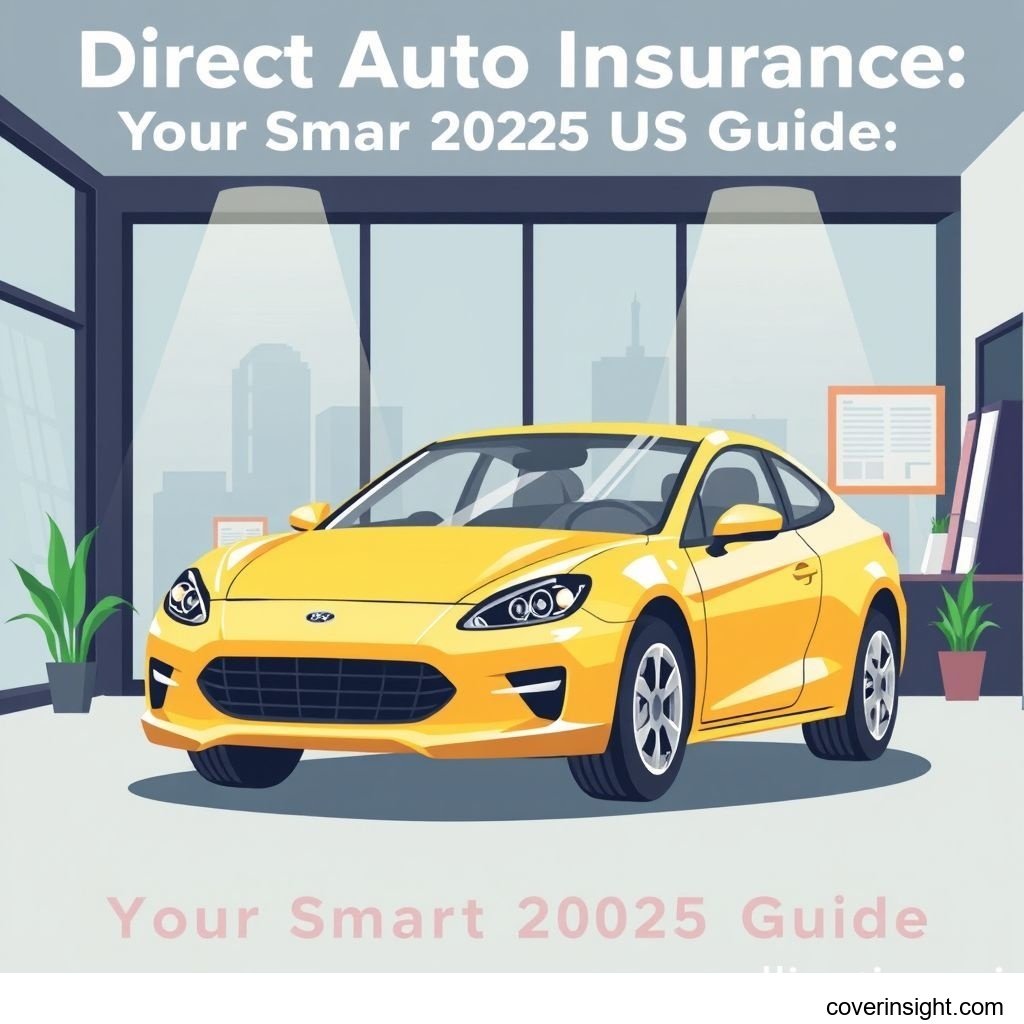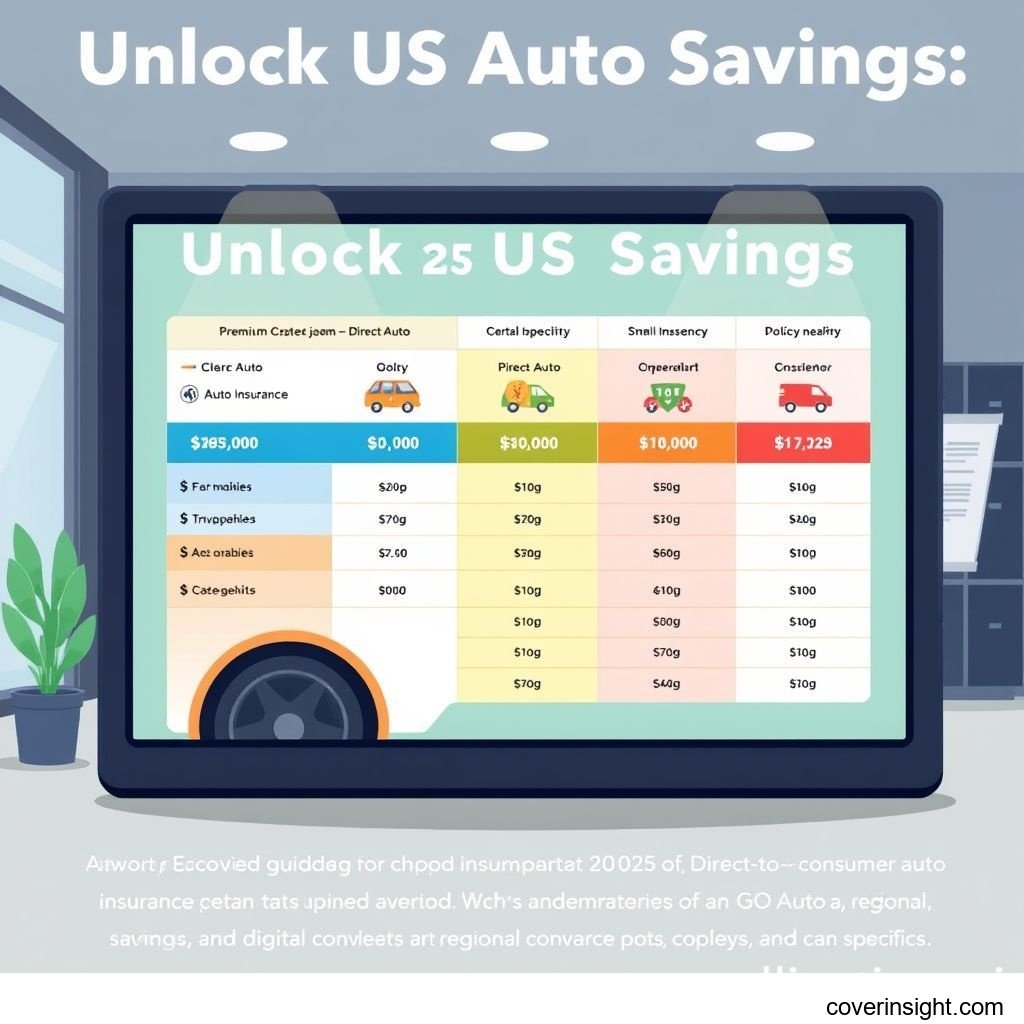Introduction
In the rapidly evolving landscape of US auto insurance, 2025 brings an increased focus on direct-to-consumer models. Gone are the days when buying insurance felt like a trip to the dentist – full of paperwork and uncertainty. Today, companies like Direct, Clearcover, and GoAuto are leading the charge, offering streamlined, technology-driven solutions that put control squarely in the policyholder's hands. This shift toward direct auto insurance is not just about convenience; it’s about empowering consumers with transparency, competitive pricing, and personalized options. Navigating this new era requires understanding what these smart choices entail, from coverage specifics to cost implications, ensuring you’re well-protected on the road without breaking the bank. For those looking for more in-depth analyses, exploring resources like "Direct Auto Insurance Reviews 2025: US Guide" can provide valuable perspectives.
Coverage Details
What’s Included
When you opt for smart US auto insurance, whether from Direct, Clearcover, or GoAuto, you'll find a range of essential coverages designed to protect you financially in various scenarios. Typically, these include:
-
Liability Coverage: This is foundational and often legally required. It covers damages (both bodily injury and property damage) you might cause to others in an at-fault accident. For instance, if you rear-end someone and cause damage to their car and injuries to its occupants, your liability coverage would kick in.
-
Collision Coverage: This pays for damages to your own vehicle if it collides with another car or object, regardless of who is at fault. So, if you hit a tree or another car, your collision coverage would help repair or replace your vehicle.
-
Comprehensive Coverage: Think of this as protection against non-collision incidents. It covers damage from events like theft, vandalism, fire, natural disasters (hail, floods), or hitting an animal.
-
Personal Injury Protection (PIP) / Medical Payments (MedPay): Depending on your state, this coverage pays for medical expenses for you and your passengers after an accident, regardless of fault. While auto insurance handles immediate accident-related medical costs, it's worth noting that comprehensive health coverage is also vital for long-term health needs, and resources like Healthcare.gov can provide further information on broader health insurance options.
-
Uninsured/Underinsured Motorist (UM/UIM) Coverage: This is a lifesaver if you're hit by a driver who doesn't have enough (or any) insurance to cover your damages and injuries.
Common Exclusions
While comprehensive, auto insurance isn’t a blank check. Common exclusions often include:
-
Intentional Damage: Deliberately crashing your car or causing damage is never covered.
-
Commercial Use: If you use your personal vehicle for business purposes (e.g., ridesharing or deliveries) without a specific endorsement or commercial policy, you might not be covered.
-
Racing or Off-Roading: Damage incurred during racing or unauthorized off-road activities is typically excluded.
-
Wear and Tear: Routine maintenance or damage from normal wear and tear isn't covered by auto insurance; that's just part of vehicle ownership.
-
Personal Belongings: While the car itself is covered, items inside the car like your laptop, phone, or luggage, are usually excluded and would fall under a homeowners or renters insurance policy.
Cost Analysis
Price Factors
The price of your direct auto insurance premium is influenced by a cocktail of factors. Insurers like Clearcover and GoAuto use sophisticated algorithms to assess risk, considering:
-
Driving Record: This is probably the biggest factor. A clean record with no accidents or traffic violations means lower premiums. Conversely, a history of tickets or claims will likely push your rates skyward.
-
Vehicle Type: Expensive, high-performance, or luxury cars typically cost more to insure due to higher repair costs and increased theft risk.
-
Location: Where you live and primarily park your car matters. Urban areas with higher traffic density, crime rates, and more accidents often lead to higher premiums than rural areas. For example, according to the National Association of Insurance Commissioners (NAIC), average auto insurance expenditures can vary significantly by state, reflecting diverse population densities and accident rates.
-
Age and Gender: Younger, less experienced drivers, particularly males, generally face higher rates. Rates typically decrease with age and experience, leveling off in middle age.
-
Credit Score: In many states, a higher credit-based insurance score can translate to lower premiums, as insurers correlate financial responsibility with lower claim likelihood.
-
Deductibles: Your deductible is the amount you pay out-of-pocket before your insurance kicks in. Choosing a higher deductible usually lowers your premium, but means you'll pay more upfront if you file a claim.
Saving Tips
Even with fluctuating factors, there are plenty of ways to keep your direct auto insurance costs in check:
-
Shop Around: This is paramount. Don’t settle for the first quote. Get quotes from multiple providers like Direct, Clearcover, and GoAuto. Use online comparison tools or consult "Direct Auto Insurance Reviews US 2025: Smart Choices" to find competitive rates.
-
Bundle Policies: Many insurers offer discounts if you bundle your auto policy with home, renters, or life insurance.
-
Maintain a Good Driving Record: Staying accident-free and avoiding tickets is the most effective long-term saving strategy.
-
Ask About Discounts: Don't be shy! Inquire about discounts for good students, low mileage, defensive driving courses, anti-theft devices, or even professional affiliations.
-
Increase Your Deductible: If you have an emergency fund, consider raising your collision and comprehensive deductibles to lower your monthly premium.
-
Improve Your Credit Score: A better credit score can lead to significant savings in many states.
-
Drive a Safer, Cheaper-to-Insure Car: Before buying a new vehicle, check its insurance costs.
-
Utilize Telematics/Usage-Based Insurance: Many direct insurers offer programs that track your driving habits (e.g., mileage, braking, speed) via a mobile app or device, rewarding safe drivers with lower rates.
FAQs
How much does direct auto cost?
The cost of direct auto insurance varies widely, typically ranging from a few hundred dollars to several thousand per year, depending on a multitude of factors like your location, driving history, vehicle type, and the coverages you select.
What affects premiums?
Premiums are influenced by your driving record, vehicle's make and model, your age and gender, where you live, your credit score, and the types and amounts of coverage you choose.
Is it mandatory?
Yes, in almost all US states, auto liability insurance is mandatory. Each state sets minimum coverage requirements, though these minimums are often insufficient for serious accidents, so it's wise to carry more. You can find specific requirements by checking your State Insurance Departments website.
How to choose?
Choosing the right direct auto insurance involves comparing quotes from reputable providers like Direct, Clearcover, and GoAuto. Look beyond just price; consider their customer service, claims process efficiency, financial stability, and available discounts. Reading reviews and understanding your specific needs are crucial steps. For broader guidance, consider checking "Insurance Resources Global" for general tips on insurance selection.
Consequences of no coverage?
Driving without mandatory auto insurance carries severe consequences. These can include hefty fines, suspension of your driver's license and vehicle registration, vehicle impoundment, and even jail time in some states. More importantly, if you're involved in an accident without insurance, you'll be personally responsible for all damages and injuries you cause, which can lead to significant financial ruin. For instance, a driver in Arizona who caused an accident and was uninsured faced a multi-million dollar lawsuit for medical bills and property damage, ultimately leading to bankruptcy, highlighting the dire financial consequences of neglecting coverage.
Author Insight & Experience: Based on my experience living in the US and navigating the insurance world, the shift towards direct auto insurance isn't just a trend; it's a game-changer. It forces traditional insurers to adapt and pushes for greater transparency across the board. What truly stands out with companies like Clearcover and GoAuto is their ability to leverage technology not just for quick quotes, but for a smoother claims process. It's like having a dedicated agent in your pocket, making it easier to handle life's unexpected bumps. My advice? Don't just chase the lowest price; look for a provider that marries competitive rates with reliable, tech-savvy service, especially when it's crunch time after an accident.








Comments